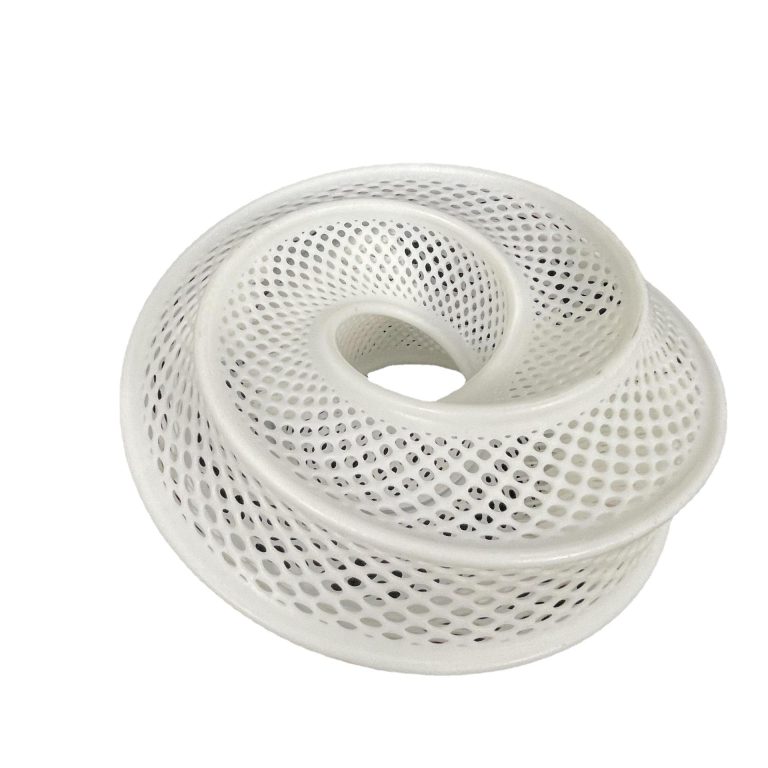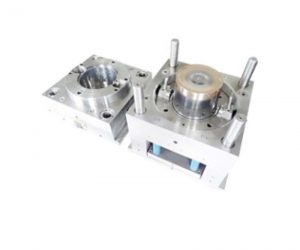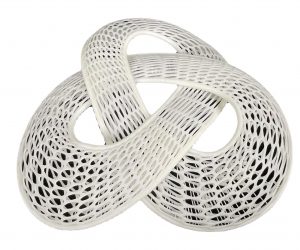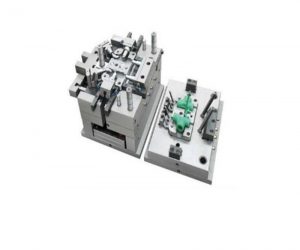Discover how custom 3D printed items can change the game, letting people show off their individual flair and cater to their specific wants through bespoke designs.
I. Beyond Mass Production: The Ontological Shift in Personalized Manufacturing
A. The Deconstruction of Standardized Consumption: The hegemony of mass-produced goods, characterized by homogeneity and a disregard for individual expression, is undergoing a profound disruption. The emergent paradigm of customized 3D printing represents a radical shift, prioritizing the ontological uniqueness of the consumer. This personalization transcends mere aesthetic preferences; it delves into the fundamental articulation of individual needs and desires, manifesting in products meticulously tailored to specific physiological, psychological, and ergonomic parameters.
B. The Accelerating Trajectory of Additive Manufacturing: The technological singularity of 3D printing is not merely an incremental improvement; it represents a paradigm shift in manufacturing processes. No longer confined to the niche realm of industrial prototyping, additive manufacturing has democratized design and production, empowering both individuals and corporations with unprecedented control over the creation of tangible objects. This evolution, far from linear, is characterized by exponential advancements in material science, process optimization, and algorithmic design capabilities.
II. The Technological Arsenal of Personalized Fabrication: A Multifaceted Examination
A. A Taxonomy of Additive Manufacturing Techniques: The diverse landscape of 3D printing techniques presents a complex array of options, each with its own unique strengths and limitations. Fused Deposition Modeling (FDM), while ubiquitous due to its accessibility, pales in comparison to the precision of Stereolithography (SLA) or the material versatility of Selective Laser Sintering (SLS). Emerging techniques, such as binder jetting and digital light processing (DLP), further complicate this already multifaceted technological landscape, demanding a nuanced understanding of material properties, resolution capabilities, and build volume constraints.
B. Material Science: Expanding the Boundaries of Customization: The relentless pursuit of novel materials is inextricably linked to the advancement of 3D printing. The spectrum of printable materials extends far beyond simple thermoplastics, encompassing high-performance polymers with tailored mechanical properties, biocompatible materials for medical applications, and even functionalized composites with embedded electronics. This material diversity, coupled with ongoing research into novel material formulations, continuously pushes the boundaries of what is possible in personalized fabrication.
C. The Algorithmic Architect of Personalized Production: The software ecosystem underpinning customized 3D printing is as crucial as the hardware and materials themselves. Advanced Computer-Aided Design (CAD) tools empower users to create intricate geometries beyond the limitations of traditional subtractive manufacturing. Furthermore, sophisticated generative design algorithms, coupled with artificial intelligence (AI)-driven optimization routines, automate the design process, allowing for the rapid exploration of a vast design space and the creation of truly bespoke products. The integration of these algorithmic tools within a robust manufacturing execution system (MES) is critical for efficient production management and quality control.
This analysis underscores the transformative potential of customized 3D printing. However, the ethical implications of this technology, particularly concerning intellectual property, environmental sustainability, and the potential for misuse, demand careful consideration as we navigate this rapidly evolving landscape.
III. Advantages of Bespoke 3D-Printed Products: A Multifaceted Analysis
A. User-Centricity and Experiential Optimization:
The transformative potential of customized 3D printing hinges on its profound impact on user experience. This technology transcends the limitations of mass production, enabling the creation of products meticulously tailored to individual anthropometric data, stylistic preferences, and functional requirements. This hyper-personalization fosters a heightened sense of ownership and emotional connection, exceeding the purely utilitarian value proposition of mass-market alternatives. Applications range from anatomically precise medical implants and orthoses to bespoke fashion accessories exhibiting unprecedented fit and form. The resulting enhancement in user satisfaction represents a significant paradigm shift in product design and consumer engagement.
B. Sustainability and Resource Optimization through Additive Manufacturing:
Beyond the individual benefits, 3D printing offers compelling advantages in terms of environmental sustainability. Unlike subtractive manufacturing processes characterized by significant material waste and energy consumption, additive manufacturing allows for on-demand production, minimizing material usage and inventory requirements. Furthermore, the inherent design flexibility of 3D printing facilitates the creation of lightweight, optimized geometries, further reducing material consumption and enhancing product efficiency. This contributes to a lower carbon footprint across various sectors, positioning customized 3D printing as a crucial component of a circular economy. Life cycle assessments are now critical to fully quantify these environmental benefits.
C. Accessibility, Inclusivity, and the Democratization of Design:
The accessibility afforded by customized 3D printing represents a significant advancement in social equity. This technology empowers individuals to design and fabricate personalized solutions addressing unique needs and challenges, thereby enhancing quality of life and promoting social inclusion. The creation of bespoke assistive devices, prosthetics, and educational tools transcends the limitations of standardized products, offering tailored solutions for individuals with disabilities or specific requirements. This democratization of design fosters a more inclusive and equitable society, challenging traditional models of product development and distribution.
IV. Challenges and Mitigation Strategies in Bespoke 3D Printing: A Critical Assessment
A. Quality Assurance and Metrological Considerations:
The escalating demand for customized 3D-printed products necessitates rigorous quality control and metrological precision. Maintaining consistent performance, safety, and reliability across diverse applications requires sophisticated quality assurance protocols. These include advanced inspection techniques, statistical process control methodologies, and the implementation of data-driven analytics to identify and mitigate potential defects. The development of standardized testing procedures and certification processes is crucial to build consumer confidence and ensure product integrity.
B. Regulatory Frameworks, Intellectual Property Rights, and Liability:
The proliferation of customized 3D printing necessitates a robust regulatory framework addressing intellectual property rights and product liability. The ease of digital replication raises concerns regarding design piracy and the potential for counterfeit products. Collaboration between policymakers, industry stakeholders, and legal experts is essential to develop comprehensive guidelines safeguarding intellectual property rights, ensuring product safety, and establishing clear liability frameworks. This requires a nuanced understanding of the legal implications of digital design files and the complexities of distributed manufacturing.
C. Economic Viability and Market Penetration:
Despite its inherent advantages, the economic viability and market penetration of customized 3D printing remain significant challenges. The initial investment in specialized equipment, software, and skilled personnel can be substantial, potentially hindering adoption, particularly among small-scale manufacturers or individual consumers. Furthermore, achieving competitive pricing and demonstrating a compelling value proposition to consumers are crucial for driving widespread market acceptance and ensuring the long-term sustainability of this technology. Strategic pricing models and targeted marketing campaigns are essential to address these challenges.
V. Case Studies and Advanced Applications of Customized 3D Printing
A. High-Value, Bespoke Manufacturing in the Luxury Goods Sector: The application of additive manufacturing in the creation of high-value, bespoke jewelry and fashion accessories transcends mere customization. It represents a paradigm shift in luxury goods production. The ability to realize intricate geometries and integrate multiple materials—from precious metals and gemstones to biocompatible polymers—allows for the creation of unprecedentedly complex and personalized designs. This extends beyond simple personalization to encompass the generation of entirely novel aesthetic forms and functionalities, challenging established design paradigms and pushing the boundaries of material science within the context of high-end consumer products. The success of this approach hinges on sophisticated design software, precise material selection protocols, and rigorous quality control measures to ensure the flawless execution of highly intricate designs.
B. Bioprinting and Regenerative Medicine: The convergence of customized 3D printing and bioprinting is revolutionizing the medical landscape. Beyond the creation of prosthetics and orthotics, the ability to bioprint functional tissues and organs represents a potential paradigm shift in regenerative medicine. The precise deposition of biocompatible materials and living cells allows for the creation of patient-specific implants and grafts, minimizing the risk of rejection and accelerating healing. However, this field faces significant challenges related to biomaterial compatibility, cellular viability, and the regulatory hurdles associated with the introduction of novel bioengineered products. Success in this area requires interdisciplinary collaboration between materials scientists, biomedical engineers, and clinicians.
C. Personalized Educational Tools and Assistive Technologies: The impact of customized 3D printing extends beyond the creation of aesthetically pleasing objects; it offers transformative potential in the development of personalized educational tools and assistive technologies. The capacity to rapidly prototype and iterate on designs allows for the creation of customized learning aids tailored to individual learning styles and needs. This includes the development of ergonomic tools for students with disabilities, interactive models for complex scientific concepts, and personalized gaming interfaces designed to enhance engagement and cognitive development. The scalability and cost-effectiveness of 3D printing make it an ideal platform for the democratization of access to personalized educational resources.
VI. Prospective Technological Disruptions and Societal Implications
A. Material Science Advancements and Process Optimization: The future of customized 3D printing is inextricably linked to advancements in material science and process optimization. The development of novel biocompatible materials, high-performance polymers, and functionalized composites will expand the range of applications and improve the performance characteristics of 3D-printed products. Simultaneously, advancements in printing techniques, such as multi-material printing, 4D printing (shape-changing materials), and micro-printing, will enable the creation of increasingly complex and sophisticated designs. These advancements will necessitate the development of sophisticated software and control systems capable of managing the complexity of these advanced processes.
B. Decentralized Manufacturing and Supply Chain Disruption: The potential for decentralized manufacturing represents a profound disruption to traditional retail and manufacturing models. Customized 3D printing empowers local production, reducing reliance on global supply chains and enabling on-demand manufacturing. This shift necessitates a re-evaluation of traditional business models, including inventory management, distribution networks, and the role of OEMs. The implications for economic development, job creation, and consumer empowerment are significant, demanding careful consideration of the social and economic consequences of this technological shift.
C. Ethical Considerations and Societal Impact: The widespread adoption of customized 3D printing necessitates a proactive engagement with the ethical considerations and societal implications of this technology. Issues related to intellectual property rights, environmental sustainability, and the potential for misuse require careful consideration. A robust regulatory framework is crucial to ensure responsible innovation and mitigate potential risks. The equitable distribution of benefits and the prevention of exacerbating existing inequalities are paramount concerns that must be addressed proactively to harness the transformative potential of this technology for the betterment of society.
VII. Conclusion: Customized 3D-Printed Products: A Disruptive Paradigm Shift in Product Lifecycle Management
The advent of customized 3D-printed products signifies a profound paradigm shift, transcending the limitations of traditional product design and manufacturing. This technology's impact resonates across multiple strata, from individual empowerment and novel design freedoms to the fundamental disruption of established industrial models. This paradigm shift challenges the very definition of "product," moving beyond mass production towards a hyper-personalized, on-demand ecosystem.
As detailed within this analysis, the advantages of customized 3D printing are multifaceted and strategically significant. These range from demonstrably enhanced user experience and satisfaction metrics, driven by unparalleled personalization, to the mitigation of waste through localized, just-in-time production. Furthermore, the technology fosters greater accessibility and inclusivity by enabling bespoke solutions previously unattainable through conventional methods. However, the transition is not without its inherent complexities. Businesses and consumers alike grapple with nuanced challenges encompassing rigorous quality control protocols, stringent regulatory compliance, and the optimization of cost-effectiveness within this nascent landscape.
Despite these obstacles, the future trajectory of customized 3D printing remains undeniably positive. A confluence of emerging technologies and iterative innovations promises to further destabilize conventional retail and manufacturing paradigms. The rise of decentralized, on-demand production networks, coupled with the virtually limitless potential for personalized expression and creative exploration, signifies an epochal transformation still in its nascent stages.
The global embrace of customized 3D printing portends a profound and enduring impact on the entire product lifecycle, from ideation and design to fabrication and distribution. By fully harnessing this revolutionary technology's potential, both individuals and corporations can spearhead innovation, cultivate stronger community engagement, and secure a competitive advantage within an increasingly personalized and dynamic marketplace. The implications extend beyond mere product creation; they represent a fundamental reimagining of the relationship between producer and consumer.
Frequently Asked Questions (FAQs):
- Key Benefits of Customized 3D-Printed Products: Beyond enhanced user satisfaction and reduced waste, significant benefits include optimized supply chain agility, reduced lead times, and the ability to rapidly iterate designs based on user feedback, facilitating a continuous improvement cycle. Furthermore, the technology allows for the creation of complex geometries and functionalities previously impossible with traditional manufacturing methods.
- 3D Printing Technologies for Customization: The spectrum of additive manufacturing technologies employed encompasses Fused Deposition Modeling (FDM) for prototyping and plastic part creation; Stereolithography (SLA) for high-resolution, detailed products; Selective Laser Sintering (SLS) for robust, high-strength parts; and increasingly sophisticated techniques like Multi-Jet Fusion (MJF) and Digital Light Processing (DLP), each offering unique material and performance characteristics.
- Leveraging Customized 3D Printing for Customer Needs: Strategic application extends beyond simple personalization. This includes creating highly customized medical implants tailored to individual patient anatomy, designing bespoke architectural components, and developing personalized assistive devices with enhanced ergonomics and functionality. The possibilities are limited only by design ingenuity and material science advancements.
- Challenges in Ensuring Quality and Accuracy: Maintaining consistent product quality across a diverse range of customized outputs requires sophisticated process control and advanced quality management systems. This includes rigorous material characterization, precise calibration of printing parameters, and the implementation of non-destructive testing methodologies to ensure dimensional accuracy and structural integrity. Intellectual property protection also presents a significant hurdle.
- Disruption of Traditional Retail and Manufacturing: The decentralized nature of 3D printing fundamentally challenges established supply chains, empowering localized production and potentially disrupting the dominance of large-scale manufacturers. This shift necessitates a re-evaluation of traditional business models, emphasizing agility, responsiveness, and a direct consumer-producer relationship. The implications for global trade and economic structures are far-reaching and require careful consideration.




